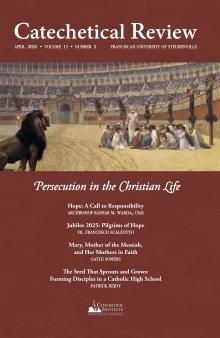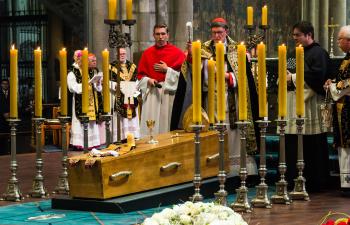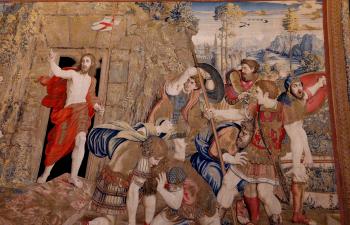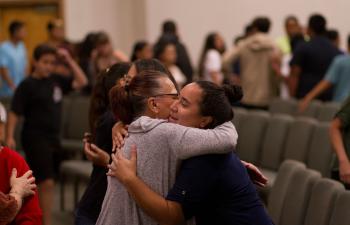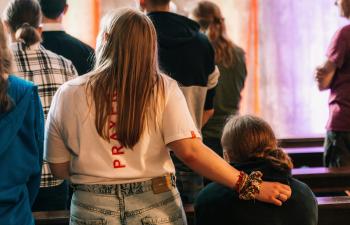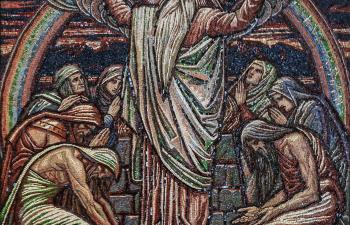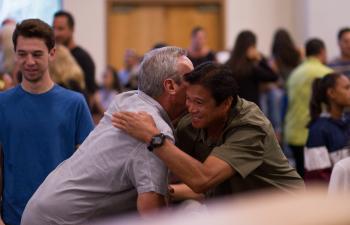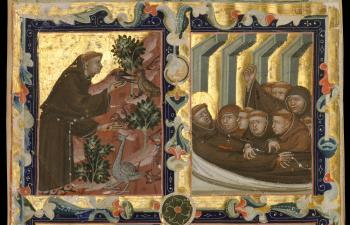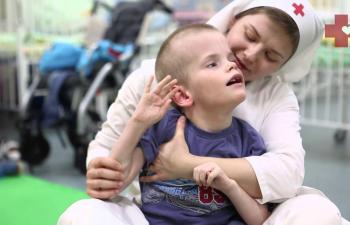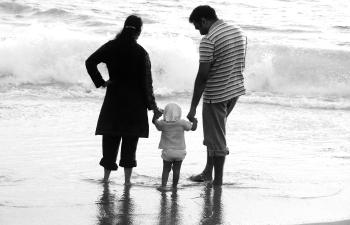 I am reading a remarkable book. It’s called How Saints Die: 100 Stories of Hope by the Italian Carmelite Antonio Maria Sicari. The book reveals just how much can be learned about the saints by how they face their own death. The saints, of course, are ordinary human beings—not a one born with a halo—who have persevered in their Christian life. Each has grown in heroic virtue by God’s grace.
I am reading a remarkable book. It’s called How Saints Die: 100 Stories of Hope by the Italian Carmelite Antonio Maria Sicari. The book reveals just how much can be learned about the saints by how they face their own death. The saints, of course, are ordinary human beings—not a one born with a halo—who have persevered in their Christian life. Each has grown in heroic virtue by God’s grace.
Frequently in the pages of this book the reader is confronted by human beings demonstrating a shocking serenity and trust in God amidst dire circumstances at the end of life. Whether dying of disease or advanced years, or often violently through the malice of others, each of these women and men has been deeply conformed to the self-giving love of Christ. In facing death, each could truly say “The LORD gave and the LORD has taken away; blessed be the name of the LORD” (Job 1:21) or “I live, no longer I, but Christ lives in me” (Gal 2:20)!
When I was much younger, as I was coming to the faith in the 1980s, I loved reading the lives of the saints. I also naively believed that Christian persecution was mostly a thing of the past. In fact, the 20th century witnessed the murder of millions of Christians. And the 21st century, when considering the serious adversities facing Christians, especially in parts of the Middle East and Africa, remains deeply troubling. In our time, no matter where we live in the world, the more the Catholic worldview is rejected the more we can expect that greater persecution is coming.
Of course, such persecution shouldn’t surprise us. We follow the One who died nailed to the Cross. And Jesus himself said, “Blessed are you when they insult you and persecute you and utter every kind of evil against you [falsely] because of me” (Mt 5:11). These words show us that it’s truly not a matter of “if” Christians are persecuted; our Lord said, “when . . . they persecute you.” We can, in fact, presume that such persecution will happen to us in one form or another. This has been the normative reality for Christians from the earliest centuries of Christianity.
What are we to do when faced with present or future Christian persecution? It seems to me two things are necessary.
First, when we hear of Christians being persecuted either close to home or far from us, we must stand in solidarity with them in some concrete way. Baptized into Christ, almighty God becomes our heavenly Father—and therefore each of his children is brother or sister to us. The waters of baptism connect us at an even deeper level than the bonds we share with our biological siblings. When our brothers and sisters are threatened or attacked on account of their Christian faith, this should move us deeply, and we must do something tangible to support them. Archbishop Bashar Warda, CSsR, of the Chaldean archdiocese of Erbil in Iraq describes in this issue what it was like to welcome persecuted Christian refugees to his diocese during the terrible scourge of ISIS in his country—and also the importance of the support they received from those in the worldwide community who stood in solidarity with them. In situations like these, even living thousands of miles away, we must not be complacent. We can pray and fast for them as well as send material support.
Second, when we ourselves are to face persecution for our faith in Christ, the witness of the saints challenges us deeply. What kind of deep reservoir of Catholic faith and life must be in place for us to respond as Jesus commands us in the Beatitudes? Immediately after calling those being persecuted in his name “blessed,” he continues: “Rejoice and be glad, for your reward will be great in heaven” (Mt 5:12). Rejoice and be glad. We can ask ourselves: how do we construct an interior life that gives us the deeper capacities to rejoice under such circumstances? The saints give compelling testimony of just such a deep reservoir to draw upon when facing such terrible trials.
St. Thomas More, despite feeling acutely the malevolence of his unjust trial and sentencing, faced his death with good humor as he climbed the scaffold where he was to be executed, even to the point of joking with his executioners. It was clear that his tormentors were not able to rob him of his freedom and joy. The light heart evident in his final moments is astonishing. He was influenced by a sincere gladness, perhaps seeing both the ridiculousness of his sentence and the goodness of the God who awaited him.
Another form of Christian rejoicing amidst persecution was seen in the most notorious of concentration camps in 1941. St. Maximilian Kolbe, condemned to death with nine others in a starvation bunker in Auschwitz, helped his fellow prisoners to raise their hearts to the Lord. Sicari explains:
They were condemned to die of starvation and were thrown naked into the death bunker, where nothing was given to them, not even a drop of water. But from that day forward, the camp possessed a sacred place. The long agony was punctuated by the prayers and sacred hymns Father Kolbe recited and sang out loud. And from the cells nearby, the other victims would respond.[1]
As death agonizingly inched closer in that bunker, what depth of relationship with the Lord made the singing of hymns possible?
I suspect that rejoicing under persecution takes many various forms. Perhaps it allows some saints to see beyond their distress and into the hearts of their persecutors. St. Titus Brandsma, a Dutch Carmelite priest who was injected with carbolic acid at the Dachau concentration camp, “always said about his torturers, ‘they, too, are children of the good God, and perhaps there is still something left in them.’”[2] The nurse who gave him this lethal injection experienced a profound conversion at the very moment she poisoned him. She testified later that as she “was injecting him, it was the intercession of Titus that truly infused into her the grace of God. And the poor woman, during the canonical investigation, explained that the face of that elderly priest had remained stamped in her memory forever, because she had read something there that she had never known before. She simply said, ‘He had compassion for me.’ Like Christ. In this way, with the tenderness of a humiliated father, Brandsma was able to bring to life the one who had just given him death.”[3]
If I’m honest with myself, melancholic temperamented person that I am, this ideal seems a bit ludicrous and beyond my capacities. I have to constantly battle my natural tendencies toward self-pity and defensiveness when experiencing even minor injustices. I know just how much I need to continue to grow in God’s grace toward this kind of holiness. May each of us take bold steps forward into the grace of Christ, that we might become more and more like the One who forgave those who nailed him to the Cross. Then, perhaps, in the most basic adversities in our future, we may “rejoice and be glad.” And should we face much more serious persecution, may we be ready to say with the saints, “For to me life is Christ, and death is gain” (Phil 1:21).
This article is from The Catechetical Review (Online Edition ISSN 2379-6324) and may be copied for catechetical purposes only. It may not be reprinted in another published work without the permission of The Catechetical Review by contacting [email protected]



